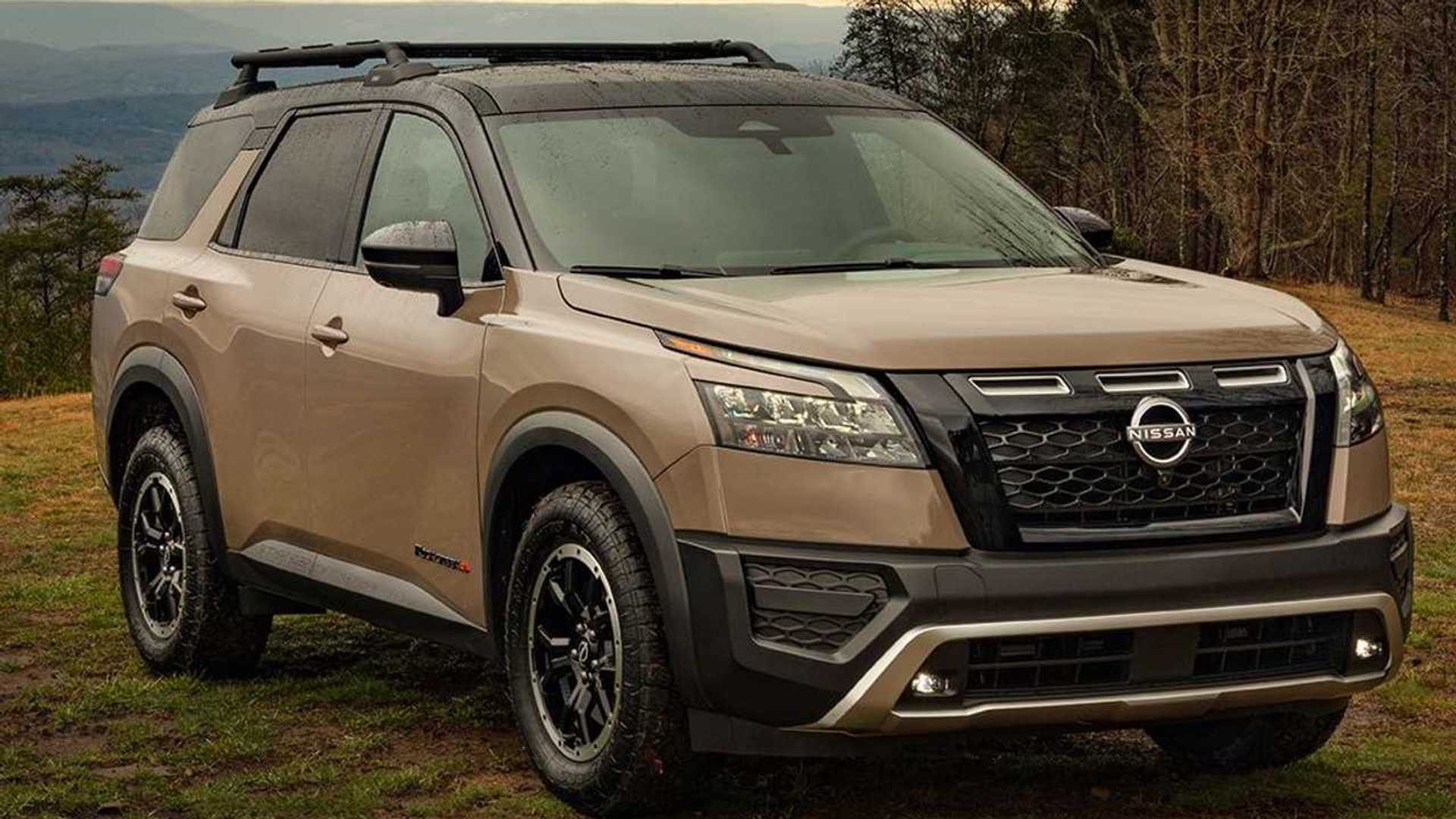When it comes to buying an SUV, reliability should be high on your checklist—especially when it concerns the transmission. This is one of the most expensive and complex components in any vehicle.
A failing transmission can easily cost between $2,000 and $7,000 to repair or replace. While some SUVs are built with durable, time-tested gearboxes, others are plagued by design flaws, software issues, or under-engineered components that result in frequent trips to the repair shop.
Let’s explore five SUVs that consistently prove dependable in terms of transmission longevity—and five that are notorious for repeated transmission troubles.
SUVs That Rarely Need Transmission Repairs
When shopping for an SUV, most buyers focus on style, space, or fuel economy—but few consider one of the most critical (and costly) components: the transmission. A failing transmission can lead to repair bills in the thousands and leave you stranded at the worst possible time.
Fortunately, not all SUVs are created equal. Some models are built with time-tested, ultra-reliable transmissions that can easily surpass 200,000 miles with minimal issues.
In this article, we’ll highlight SUVs that have earned a reputation for exceptional transmission reliability—vehicles that consistently stay on the road and out of the repair shop. If you’re looking for peace of mind and long-term value, these are the SUVs worth your attention.
Toyota 4Runner
The Toyota 4Runner is known for its rock-solid reliability, thanks in part to its 5-speed automatic transmission (A750F), which has remained largely unchanged for years. It’s built to last and routinely clocks over 200,000 miles with basic care.
The 4Runner also benefits from its body-on-frame construction, making it a favorite for those who want both off-road capability and daily-driving dependability.
Toyota’s off-road-focused midsize SUV is undergoing a comprehensive redesign for the 2025 model year, bringing with it a new platform, updated powertrains, and fresh styling. The revamped suspension is expected to refine the vehicle’s ride quality, all while maintaining the rugged capability the 4Runner is known for when the pavement ends.
Improvements in interior space and technology offerings are also anticipated. The 2025 Toyota 4Runner will continue to compete with other off-road-ready models, such as the Ford Bronco and Jeep Wrangler.
Though the previous-generation 4Runner remained popular for its off-road skills and rugged construction, it arguably overstayed its welcome. The aging SUV was hindered by a gas-guzzling engine, outdated cabin, and clumsy on-road manners. Its obsolete tech and cramped third-row seating only added to its shortcomings.
That said, we’re genuinely excited about the new generation. Although we haven’t driven it yet, the 2025 4Runner already appears to be a significant leap forward. After exploring the interior, we appreciate its cleaner design and more utilitarian layout—it closely mirrors the well-received cabin in the new Tacoma. We’re eager to put this overhauled off-roader through our full suite of instrumented tests.
The fifth-generation 4Runner was powered by a single, underwhelming engine: a 4.0-liter V-6 mated to a five-speed automatic transmission, producing 270 horsepower and 278 lb-ft of torque.
For 2025, Toyota is offering two new powertrains, both shared with the updated Tacoma. The standard engine is a 2.4-liter turbocharged inline-four, rated at 278 horsepower and 317 lb-ft of torque. All versions of the new 4Runner will come with an eight-speed automatic transmission.
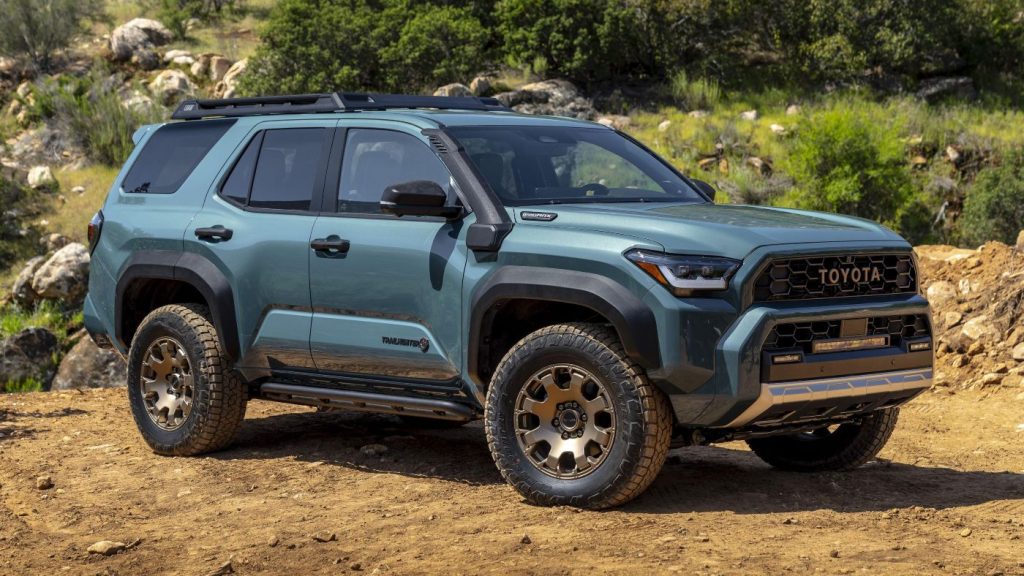
A hybrid option is also available, using Toyota’s i-Force Max system. This setup pairs the turbo-four with an electric motor integrated into the transmission, generating a combined output of 326 horsepower and 465 lb-ft of torque—the highest in 4Runner history.
Buyers can choose between rear-wheel drive and four-wheel drive on the new 4Runner. All models come standard with a rear limited-slip differential. However, only the 4WD versions include Toyota’s Active Traction Control and a two-speed electronically controlled transfer case offering high and low range.
The TRD Off-Road, TRD Pro, and Trailhunter trims all get a standard electronic locking rear differential. The Limited hybrid model can be equipped with a center-locking differential, which is standard on the Platinum model. Additional features include downhill assist control, a multi-terrain monitoring system, and a new, remote-controlled, automatically disconnecting anti-roll bar.
Like its Tacoma sibling, the 2025 4Runner offers a dedicated Trailhunter variant tailored for overlanding enthusiasts. This version features ARB’s Old Man Emu 2.5-inch forged shocks with rear piggyback remote reservoirs and a specially designed roof rack co-developed with ARB. Other off-road essentials include 33-inch Toyo Open Country all-terrain tires, rock rails, and heavy-duty steel skid plates. Ground clearance increases by 2.0 inches in the front and 1.5 inches in the rear.
To enhance visibility, the Trailhunter is equipped with a 20-inch LED light bar and Rigid-brand fog lights with selectable colors. A powerful 2,400-watt AC inverter supplies electricity to outlets inside the cabin and cargo area—handy for powering a coffeemaker or space heater while off the grid.
Honda CR-V (2017 and newer)
The Honda CR-V, particularly models from 2017 onward, features a continuously variable transmission (CVT) that has seen significant improvement over earlier iterations.
While early CVTs from Honda had issues, newer versions have proven to be smooth and reliable when maintained properly. Just be cautious with the 2015–2016 models, which had less refined transmission setups.
Japanese automaker Honda is making a strategic move, shifting its focus away from full electrics and back toward more conventional vehicles—right in step with consumers who are starting to walk back their early enthusiasm for EVs. In response, Honda’s latest models aren’t just versatile; they’re doubling down on hybrids.
Hybrid technology has long been Toyota’s trademark, but Honda has never been one to shy away from a challenge. It has consistently stayed close behind, putting up a solid fight.
That’s a big reason why models like the Honda CR-V Hybrid and Accord Hybrid have seen strong sales in the U.S. And now, with the launch of the 2025 Civic Hybrid, Honda has added another success story to its hybrid lineup.
Still, all of that might not be enough for Honda to overtake Toyota in the fiercely competitive compact crossover SUV market. Toyota recently debuted the all-new 2026 RAV4, packing it with updated styling, tech, and powertrains—plus rugged Woodland and sport-tuned GR Sport trims.
Importantly, the new RAV4 is available only in electrified variants, offering both FWD and AWD hybrid versions and pushing as much as 320 horsepower in the plug-in hybrid.
The RAV4’s comprehensive redesign brings with it three distinct flavors—Core, Rugged, and Sport—and combines that with modern interior comforts and state-of-the-art tech. It’s shaping up to be another best-seller.
Meanwhile, Honda has refreshed the 2026 CR-V, which held the title of fourth best-selling nameplate in the U.S. in 2024, trailing the RAV4. This refresh includes the first-ever TrailSport Hybrid, a tougher, electrified model aimed at adventure seekers.
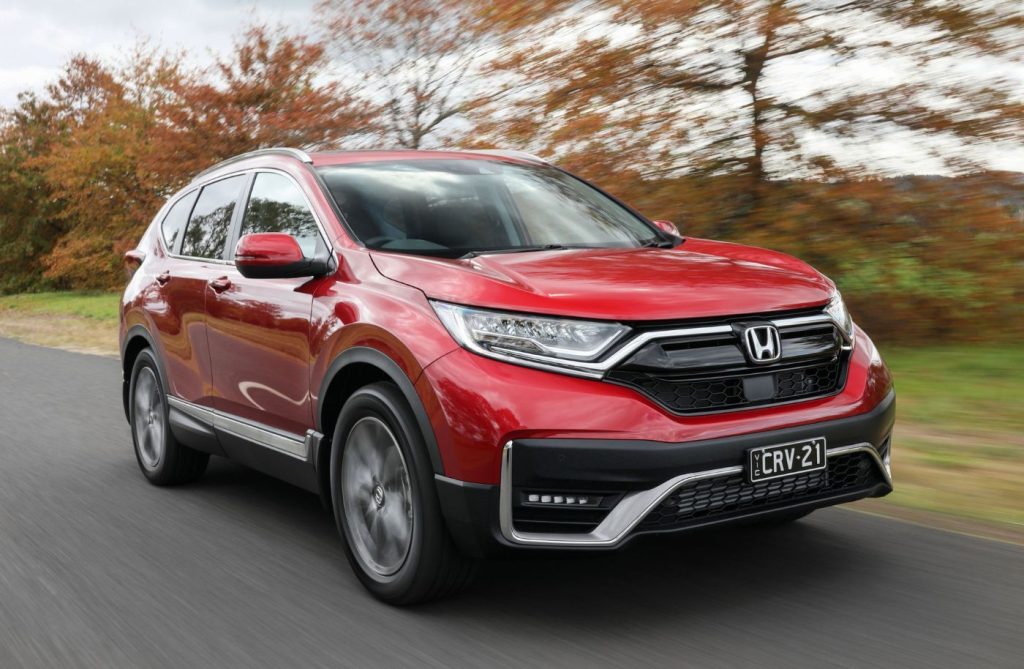
However, the core design of the CR-V has barely changed since its sixth-generation debut back in summer 2022. And that’s an issue—especially when your main competitor is coming to market with an entirely new generation. Still, this isn’t a dead end. There are always possibilities—particularly in the imaginative world of digital car artists who create bold visions through CGI.
Take, for instance, the creator behind the Evren Ozgun Spy Sketch channel on YouTube. This digital artist offers a “slightly” different take on what the next CR-V could be. While Honda might opt for a traditional mid-cycle refresh in 2027 or 2028, this pixel designer has already visualized an all-new generation of the CR-V compact crossover SUV.
This reimagined CR-V is a radical departure from what’s currently on the road. The rendering gives it a strong new identity—featuring a prominent hood, a slim full-width LED light bar tucked under a broad chrome strip, and discreet LED lamps bordering a grille with three sets of six horizontal slats. Widebody fender flares, a muscular side profile, and a completely overhauled rear end complete the transformation.
At the back, a large chrome trim runs beneath the LED taillights—not above them this time. The sculpted fender flares mirror those at the front, emphasizing the bold stance. The design balances ruggedness with style, thanks to a notably high ride height, glossy black body cladding, and dual exhaust tips on each side.
This unofficial design is far bolder than anything Honda typically rolls out. The question is, would Honda ever have the guts to turn a concept like this into a production model? And perhaps more importantly—would you choose it over the all-new 2026 Toyota RAV4 or another rival in the compact crossover SUV market?
Lexus RX
The Lexus RX stands out in the luxury SUV segment for its overall build quality, including its 8-speed automatic transmission (U880E). Lexus, a division of Toyota, is known for overengineering its drivetrains.
The RX’s transmission rarely fails and offers a smooth, durable experience. For added peace of mind, the hybrid RX 450h model uses Toyota’s eCVT system, which is even more bulletproof in terms of reliability.
The Lexus RX has long been a recognizable presence in the U.S. market, having launched in the late 1990s as a midsize crossover similar in concept to the BMW X5. Now in its fifth generation, the latest RX enters an increasingly competitive landscape, positioned between the more compact NX and the newly introduced three-row TX.
The RX straddles two market segments—it competes with smaller, less expensive models like the BMW X3 and Genesis GV70 while also appealing to buyers considering pricier midsize options like the BMW X5, which it closely matches in size. Offering two rows of seating, the RX maintains a spacious and refined interior that emphasizes comfort over sportiness.
Powertrain choices range from a 275-horsepower turbocharged four-cylinder in the base models to the 366-horsepower RX 500h performance hybrid. New for 2024 is a plug-in hybrid version—the RX 450h+—which is the first of its kind in the RX lineup and promises up to 37 miles of all-electric driving range. The mildly refreshed 2024 RX brings a number of new updates worth exploring.
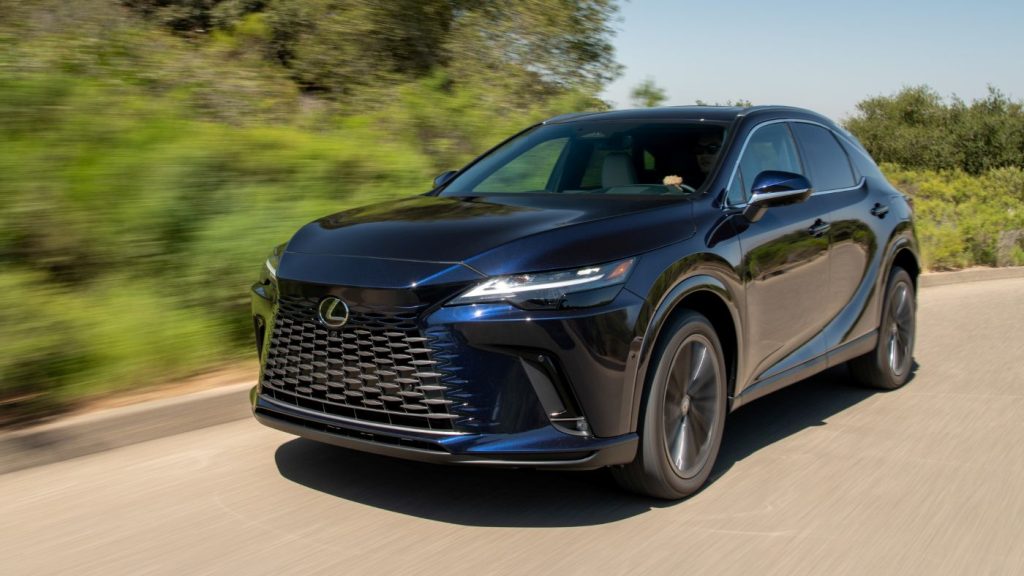
The standout addition for 2024 is the RX 450h+ Luxury AWD, the first-ever plug-in hybrid RX. As its name implies, this trim includes all the standard features of the Luxury grade.
It uses the same powertrain as the smaller NX 450h+ AWD: a naturally aspirated 2.5-liter four-cylinder engine combined with three upgraded electric motors, generating a total of 304 horsepower—58 more than the standard RX hybrid and two more than the NX 450h+. Other updates across the RX lineup include a new interior color option, Cloudburst Gray, now available on all trims.
Additionally, a new exterior color called Copper Crest is introduced for the Premium and F Sport Handling variants. A few other minor changes have been made to standard equipment and specifications, and the base price of the RX 350 has increased by $800 for 2024.
The starting price of the 2024 Lexus RX 350 is $48,600. Other gasoline-powered trims include the RX 350 Premium at $50,750, RX 350 Premium+ at $52,600, and RX 350 Luxury at $57,730.
The RX 500h F Sport Performance comes in at $62,450, and the top-of-the-line RX 450h+ Luxury plug-in hybrid is priced at $68,730. None of these figures include the $1,350 destination charge. Among the various trims, the Premium+ model offers the best value.
It includes the features found in the RX 350 Premium—such as a sunroof, ventilated front seats, wood trim, and a wireless charging pad—while adding leather upholstery and a larger 14-inch touchscreen. This trim also unlocks optional extras like a head-up display, larger wheels, and the high-end Mark Levinson audio system, giving buyers greater flexibility to customize their vehicle.
Inside, the RX maintains its tradition of comfort and refinement. The cabin layout is modern and easy to use, with physical HVAC controls providing intuitive operation. One drawback is the touch-sensitive controls on the steering wheel, which may take time to adjust to.
Overall, the interior materials and build quality remain top-notch. Even the leatherette used in the base models feels upscale, while higher trims feature real leather, ambient lighting, wood accents, and both panoramic and standard sunroof options.
A large touchscreen dominates the center of the dash, offering access to the latest tech features and connectivity options. F Sport trims come with more aggressively bolstered front seats, and the upper trims get the largest available 14-inch infotainment screen.
Space and comfort are strong throughout, including the well-shaped second-row seats. Entry and exit are easy thanks to wide door openings and the RX’s typical crossover ride height. Rear visibility is slightly hindered by thick pillars, but this is mitigated by a backup camera and Lexus’s Intuitive Parking Assist with automatic braking, which assist during tight maneuvers.
Mazda CX-5
Mazda’s CX-5 takes a different route by avoiding CVTs entirely. Instead, it uses a traditional 6-speed automatic transmission (SkyActiv-Drive), which is praised for both durability and driver engagement.
This transmission is simple, efficient, and less prone to issues compared to more complex or newer systems. It’s a smart choice for anyone who values longevity and a sportier feel.
Mazda’s top-selling SUV is undergoing a significant transformation, and the company isn’t exactly trying to keep it under wraps. The third-generation CX-5 is set to arrive with updated styling, advanced technology, and, for the first time in the model’s history, a hybrid option.
A leaked image may have spoiled the surprise, showing the vehicle fully uncovered and suggesting that the official debut could be imminent.
The image, which first surfaced on Cochespias and credits the Instagram account of Car Design News as its original source, appears to be legitimate.
The vehicle shown closely matches camouflaged prototypes that were seen testing earlier, lending further credibility to the leak. While the new model keeps the general shape and window outline of the outgoing CX-5, its body panels have been completely redesigned.
One of the most striking changes appears in the headlight design, which now sweeps inward into the grille—similar to the styling once featured on the discontinued Mercedes-Benz EQC.
Although the grille retains its recognizable shape, it introduces a new internal pattern along with slimmer chrome accents. The front bumper remains uncluttered and free of artificial air intakes, but the lower grille has noticeably increased in size, giving the SUV a bolder, more aggressive appearance.
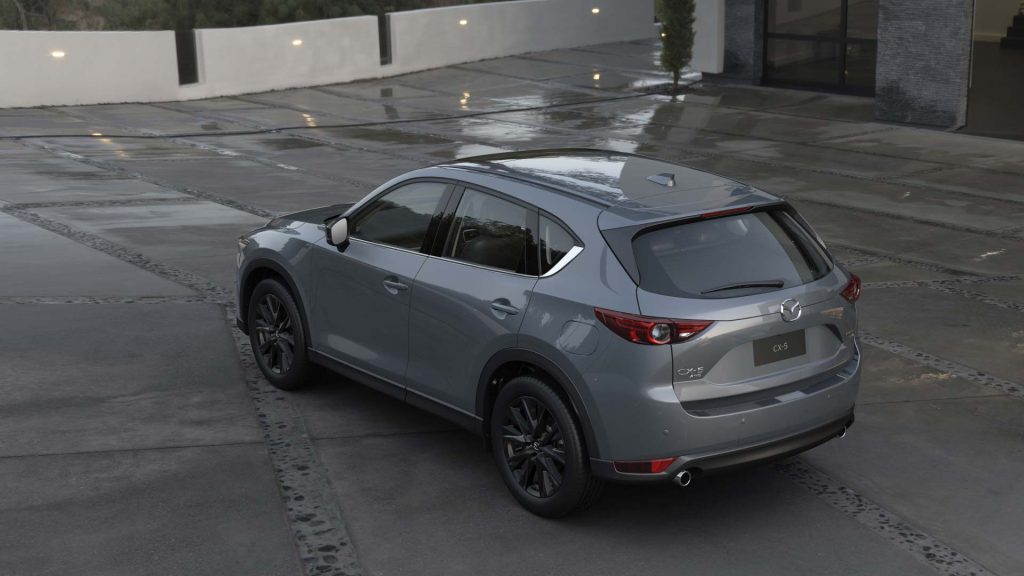
Along the sides, the new CX-5 features unpainted plastic cladding around the wheel arches, giving it a more rugged feel. However, it’s likely that upper trims will swap this out for body-colored treatments.
The rear isn’t visible in the leaked photo, but earlier spy images indicate that it will likely feature sleeker LED taillights reminiscent of those found on BMW concept models, along with dual exposed exhaust tips.
Unlike some of Mazda’s recent SUV designs, this updated CX-5 doesn’t appear to be a scaled-down version of the larger CX-60, CX-70, CX-80, or CX-90. It also avoids overlapping too closely with the similarly sized CX-50. Instead, Mazda seems intent on maintaining the CX-5’s individual identity while modernizing its design.
Inside the cabin, it’s safe to expect an upgrade in materials and features, likely borrowing from Mazda’s more premium offerings. Improvements may include higher-quality finishes, a larger infotainment system, and possibly some styling influences from the CX-90. A modest increase in overall size could further enhance its practicality, especially for families.
Mazda has confirmed that the upcoming CX-5 will be offered as a self-charging hybrid, developed entirely in-house. This version will also introduce the new SkyActiv-Z gasoline engine, which is designed to improve both fuel economy and performance.
However, the SkyActiv-Z won’t arrive until late 2027, meaning the initial hybrid model will probably launch with an existing engine before transitioning to the new one later in the product cycle.
Subaru Forester (2020 and newer)
Subaru’s more recent Forester models feature a much-improved version of the Lineartronic CVT. While older models had well-documented transmission issues, the 2020-and-later Foresters have shown solid reliability when properly maintained. Routine fluid changes are key, and models with complete service records tend to hold up well over time.
The compact Forester SUV enters its sixth generation for 2025 with a complete redesign that brings significant improvements—at least on paper. This latest iteration of the two-row, five-passenger Forester delivers increased passenger space and a quieter ride compared to its predecessor.
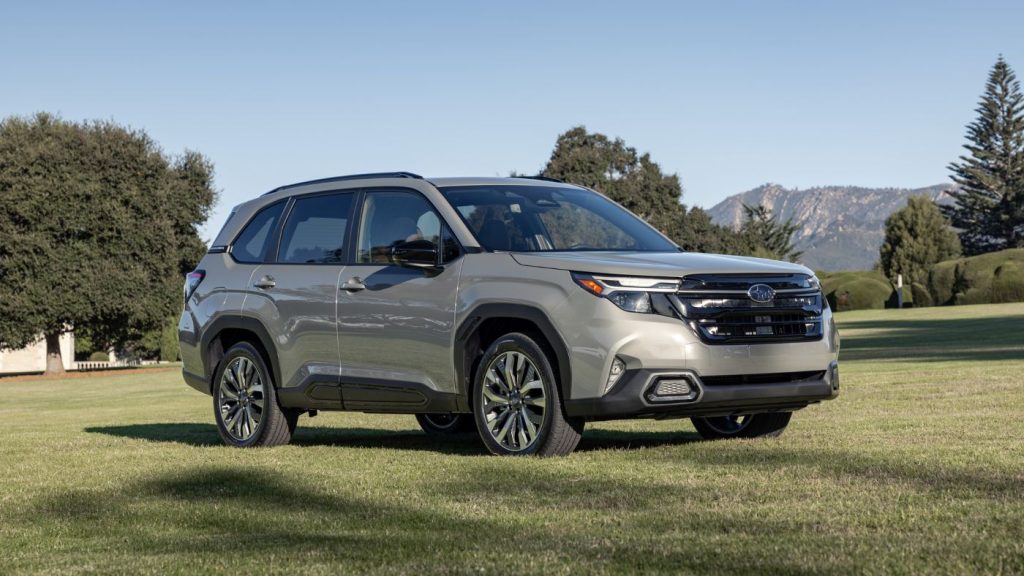
While the exterior design has been updated to reflect a more modern aesthetic, the vehicle remains unmistakably a Forester, staying true to the proven formula that has sustained its long-standing popularity. Each Forester is equipped with a flat-four engine, all-wheel drive, and a continuously variable transmission.
It also features increased ground clearance, allowing it to manage moderate off-road conditions with ease. Like many of its rivals, the Forester’s compact dimensions make it a practical choice for urban drivers, as it fits easily in garages and is more maneuverable in tight city parking spaces than larger three-row SUVs, such as Subaru’s own Ascent.
SUVs Known for Transmission Problems
When investing in an SUV, the last thing you want is to be blindsided by costly transmission repairs. Unfortunately, some models—despite offering appealing features or strong brand reputations—have developed a track record for transmission issues that can lead to breakdowns, high repair bills, and long-term headaches.
From jerky shifting to complete transmission failure, these problems can severely impact both performance and resale value. In this article, we’ll take a hard look at SUVs that are known for persistent transmission troubles. Whether you’re car shopping or evaluating your current ride, knowing which models to approach with caution could save you thousands down the road.
Ford Explorer (2011–2016)
The Ford Explorer during this period used a 6-speed automatic transmission (6F35) that was riddled with problems. Owners frequently report hard shifting, gear slipping, and total transmission failure—often before the 100,000-mile mark. These issues led to numerous customer complaints and even class-action lawsuits, marking this generation of Explorers as one to avoid if you value drivetrain reliability.
It may not be luxurious in any sense, but the base-level 2025 Ford Explorer Active hints at the strengths found in higher-tier Explorer models. This version still utilizes the same turbocharged four-cylinder engine that powers other Explorers, offering comparable performance and a robust exhaust note.
The Active also shares the lineup’s commendable driving dynamics—all at a more affordable price point. Despite its entry-level status, the standard features are far from sparse.
Included equipment consists of heated front seats (with 10-way power adjustment for the driver), Ford’s CoPilot360 suite of active safety systems, a power liftgate, tri-zone automatic climate control, proximity key entry with keyless access on all four doors, and rear parking sensors.
Like its siblings equipped with the same EcoBoost four-cylinder engine, the Explorer Active makes considerable demands on the relatively small powerplant. Even in rear-wheel-drive form and lacking many of the upscale amenities found in the ST-Line, ST, and Platinum variants, the Active still tips the scales at 4,274 pounds. That’s a substantial burden for its 300 horsepower and 310 lb-ft of torque to handle.
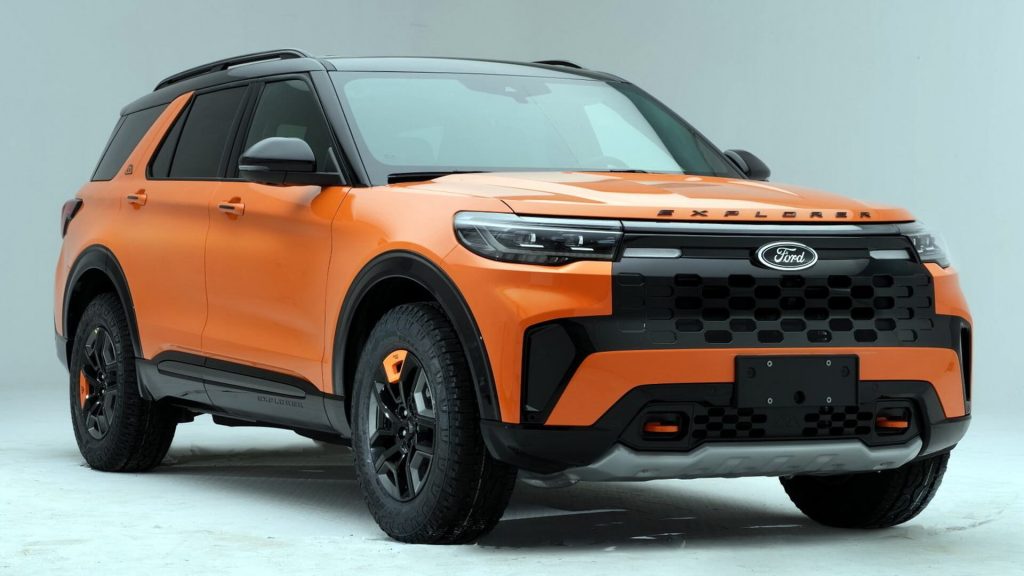
Nonetheless, the Active’s acceleration is respectably strong. It can sprint from 0 to 60 mph in just 6.1 seconds—a competitive time among midsize three-row SUVs.
For comparison, the V6-powered Jeep Grand Cherokee L requires about 7.7 seconds, while the Kia Telluride with its own V6 powertrain typically takes around 7.0 seconds depending on the trim. Notably, the Explorer’s engine delivers a raucous soundtrack under full throttle that adds to the sensation of speed.
However, that same exhaust note remains audible even during more modest driving, so it’s wise to check the speedometer now and then—because based on sound alone, you might feel like you’re barreling into the Indy 500 when you’re merely merging onto the highway.
Although the Explorer handles its weight well during performance testing, that mass does affect fuel efficiency. Even with its 10-speed automatic transmission and extensive gear range, the Explorer Active RWD is rated by the EPA at 20 mpg city, 29 mpg highway, and 24 mpg combined.
Those figures edge out the fuel economy of the AWD Explorer, as well as the rear-wheel-drive versions of the Jeep Grand Cherokee L and the Kia Telluride. It also slightly surpasses the front-wheel-drive, four-cylinder 2025 Chevrolet Traverse in fuel efficiency.
With a 17.9-gallon fuel tank, drivers can expect an estimated range of about 430 miles on a full tank. It’s important to note, however, that premium fuel is required to achieve the full 300-horsepower rating; using lower-grade gasoline will result in reduced engine output.
Nissan Pathfinder (2013–2016)
The Nissan Pathfinder’s CVT is infamous among mechanics and owners alike. The 2013–2016 models suffer from severe performance issues such as jerking, overheating, and early failure. Nissan has had to extend warranties and settle lawsuits over the Pathfinder’s transmission troubles. Though newer models have improved, those early CVT-equipped Pathfinders are a high-risk choice.
Nissan’s three-row Pathfinder has historically struggled to reach the same level of success as standout competitors like the Toyota Highlander, Kia Telluride, or Honda Pilot.
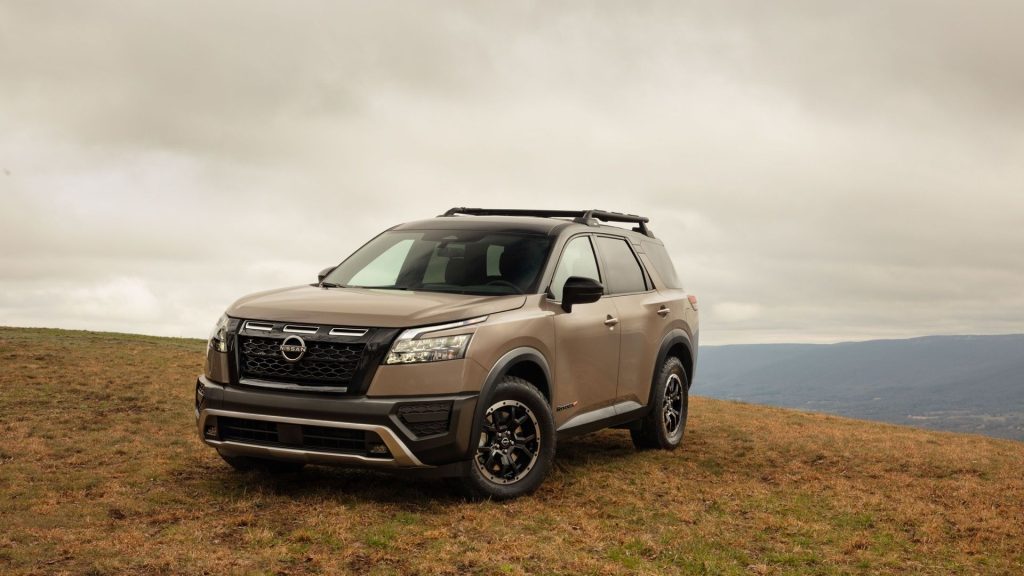
However, the current generation stands out as one of the best iterations the nameplate has seen. After a complete redesign in 2022, the Pathfinder adopted a bolder and more angular aesthetic, featuring sharper lines, sleeker lighting, and prominent badging.
These design changes gave it a tougher, more truck-like appearance, moving away from its former soft crossover silhouette. That ruggedness isn’t just for show, either—the Pathfinder boasts an impressive towing capacity of up to 6,000 pounds, which is about 1,000 pounds more than what most of its rivals can manage.
Additionally, it features a spacious and genuinely adult-friendly third row, a feature that not all competitors in this segment can offer.
Jeep Cherokee (2014–2015)
The 9-speed automatic transmission (ZF 9HP) in these Jeep Cherokee models was plagued with problems from the start. Owners experienced everything from rough shifting to sudden stalls, mostly due to poor calibration and software bugs. Despite software updates, the core mechanical issues remained for many owners, making this a transmission to avoid unless thoroughly repaired and documented.
Jeep’s announcement of the upcoming Cherokee offers some intriguing clues about what might lie beneath the SUV’s newly designed, flatter and longer hood.
According to the automaker: “Reimagined from the ground up, the next-generation Jeep Cherokee will redefine North America’s most popular vehicle segment, bringing midsize SUV customers a new, efficient, and powerful hybrid propulsion option from Jeep.”
So, a hybrid version is definitely in the pipeline. However, it’s not yet clear if the Cherokee will be available exclusively as a hybrid.
Later in the same press release, Jeep adds a somewhat ambiguous statement: “From industry-leading ICE vehicles to plug-in hybrid leadership to all-electric offerings, the new Jeep Cherokee joins the mission to empower customers with the freedom to adventure their way with unmatched Jeep capability and innovation.”
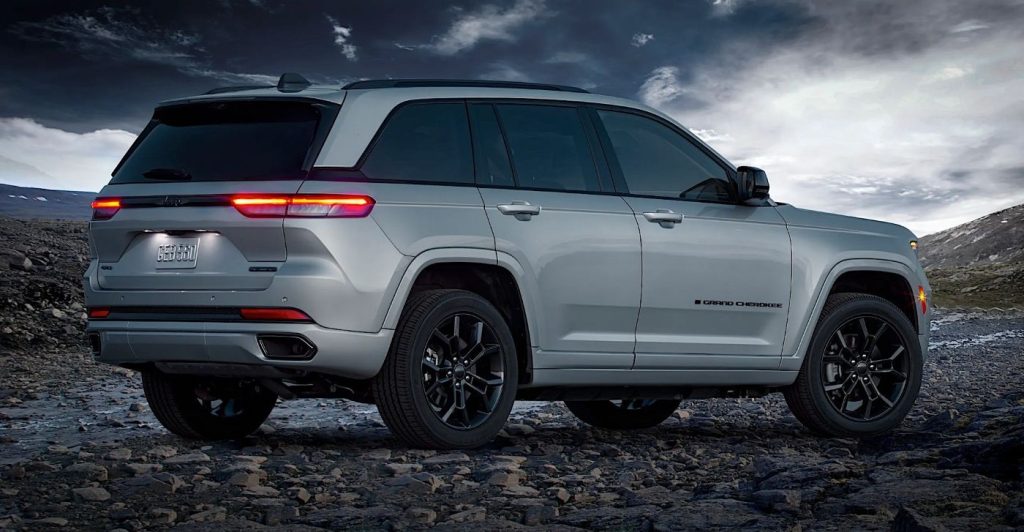
The phrasing raises questions. Is this line referring to the broader Jeep lineup, which currently includes a mix of internal combustion engine models and plug-in hybrids—such as those under the 4xe badge available on the Grand Cherokee, Wrangler, and Gladiator—or is it a subtle hint that the 2026 Cherokee itself will feature multiple powertrain options?
This could potentially mean an entry-level gas engine, like the turbocharged 2.0-liter four-cylinder used in the Compass, alongside a 4xe plug-in hybrid variant or possibly even an all-electric model.
At this point, it remains speculation. Jeep hasn’t confirmed anything beyond the hybrid powertrain and isn’t expected to reveal more details until the Cherokee’s official debut draws closer.
Chevrolet Traverse (2009–2015)
This generation of the Chevy Traverse came equipped with a 6-speed automatic (6T75) that has a poor reputation. Common problems include slipping gears and early failure—often around the 80,000-mile range.
Repair costs can be steep, typically running $3,500 to $5,000 for a rebuild or replacement. Even GM loyalists consider this a weak point in an otherwise capable vehicle.
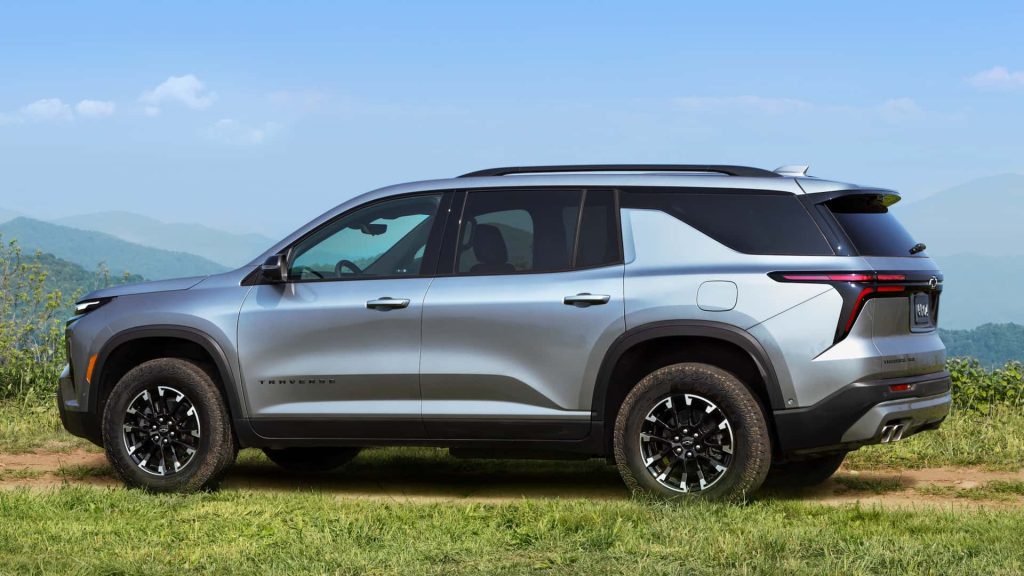
The 2025 Traverse ranks as Chevrolet’s second-largest SUV, positioned just below the truck-based Tahoe and Suburban. As a mid-size, three-row crossover, it appeals to growing families, and it offers a notable advantage: the third-row seats are spacious enough to accommodate adults—something not all competitors can claim. Additionally, cargo space behind the third row is comparable to that of the larger Tahoe, adding to its practicality.
However, when it comes to driving dynamics, the Traverse leaves room for improvement. Its turbocharged four-cylinder engine can sound strained under acceleration, and while its handling is competent, it lacks the engaging sharpness that driving enthusiasts might prefer.
For buyers prioritizing interior space, the Traverse remains a solid and practical option, but in a segment filled with strong contenders, the Kia Telluride, Toyota Grand Highlander, and Mazda CX-90 set the benchmark for excellence.
Acura MDX (2014–2016)
Acura’s 9-speed automatic transmission (another ZF 9HP variant) in these MDX models was a misstep. Owners reported hesitation, jerky gear shifts, and gear engagement failures.
Acura moved away from this transmission in later models after receiving consistent criticism. The issues weren’t just software-based—they were rooted in hardware design, making repairs expensive and often temporary.
The most noticeable updates to the 2025 Acura MDX are visual. The three-row SUV now features a revised front fascia that includes a redesigned bumper and a new take on Acura’s signature Diamond Pentagon grille, this time with a mesh insert.
Both the headlights and taillights now come with a darkened finish as standard. The grille’s design changes depending on the trim level, with a frameless version reserved for the A-Spec and Type S models.
Entry-level versions of the 2025 MDX continue to ride on the same 19-inch wheels as before, but all higher trims receive updated designs. Most variants are now equipped with new 20-inch wheels, while the Type S model stands out with 21-inch wheels that have a more open-spoke pattern to highlight the red Brembo brake calipers behind them.
A new Canyon River Blue Metallic paint color is available across most trims, and Urban Gray Pearl is introduced exclusively for the MDX A-Spec with Advance package. This trim blends the sporty aesthetics of the Type S with the most upscale features offered on non-Type S models.
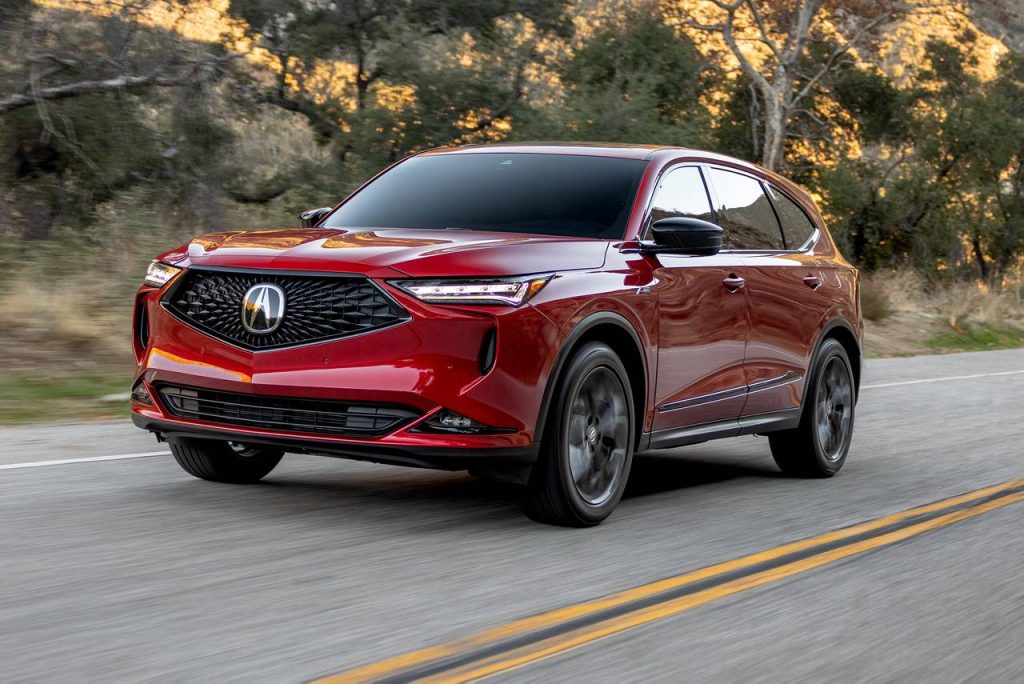
The interior of the 2025 MDX has also undergone significant changes. While the previous version was well-constructed, it was often criticized for not feeling truly luxurious. Acura appears to have taken that feedback seriously.
One of the most notable updates is the elimination of the True Touchpad Interface, which previously mirrored finger movement on a separate 12.3-inch infotainment screen. Although innovative in concept, the system fell short in execution. Acura has now replaced it with a new 12.3-inch touchscreen that’s positioned at the front edge of the dashboard for easier reach. After trying it firsthand, we found it to be not only far more intuitive but also substantially quicker in response.
Although the screen size remains unchanged, every 2025 MDX now features the Google Built-In operating system, which includes apps like Google Maps, access to the Google Play store, and support for Google Assistant voice commands.
Additional tech across all models includes AcuraLink, onboard Wi-Fi, and the ability to receive over-the-air software updates. The 12.3-inch digital instrument cluster from the 2024 model year continues unchanged for 2025.
No SUV is without flaws, but choosing one with a proven, reliable transmission can save you thousands in future repair costs and headaches. Models from Toyota, Honda, Lexus, Mazda, and Subaru continue to shine when it comes to drivetrain reliability. Meanwhile, buyers should be cautious with select Ford, Nissan, Jeep, Chevrolet, and Acura models that have struggled with transmission design and durability.
If you’re considering a used SUV, always request full service records and, if possible, have a pre-purchase inspection done—especially if the model has a known transmission history. An informed decision today could mean years of smooth driving tomorrow.

